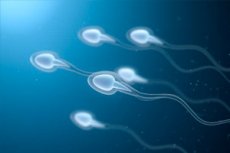New publications
A promising approach to developing contraceptive pills for men
Last reviewed: 02.07.2025

All iLive content is medically reviewed or fact checked to ensure as much factual accuracy as possible.
We have strict sourcing guidelines and only link to reputable media sites, academic research institutions and, whenever possible, medically peer reviewed studies. Note that the numbers in parentheses ([1], [2], etc.) are clickable links to these studies.
If you feel that any of our content is inaccurate, out-of-date, or otherwise questionable, please select it and press Ctrl + Enter.

Over the past 60 years, the world’s population has increased more than 2.6-fold. This growth continues—projections show that by 2037, the population will reach 9 billion, up from 8 billion in 2022. These figures highlight the need for family planning; however, contraceptive breakthroughs have been few in recent decades. This is especially true for men, for whom oral contraceptive pills have not yet been developed.
In a study published in the journal Science, researchers from Baylor College of Medicine and colleagues demonstrated in animal models that a new, non-hormonal, sperm-specific method offers a promising option for reversible male contraception.
"Despite the fact that researchers have been working on male contraceptives for a long time, we still don't have a birth control pill for men," said lead study author Dr. Martin Matsuk, director of the Center for Drug Discovery and chair of the department of pathology and immunology at Baylor College of Medicine.
"In this study, we focused on a new approach - finding a small molecule that would inhibit serine/threonine kinase 33 (STK33), a protein essential for fertility in both men and mice."
Previous studies have shown that STK33 plays a key role in the formation of functional sperm. Mice in which the Stk33 gene was switched off were infertile due to abnormal sperm and poor sperm motility. In men, the STK33 gene mutation also leads to infertility for the same reasons. Importantly, these mice and men have no other defects and the size of the testicles remains normal.
"STK33 appears to be a promising target for male contraception with minimal safety concerns," said Matsuk, who has been at Baylor College of Medicine for 30 years and holds several prestigious positions.
Finding a Potent STK33 Inhibitor "We used DNA-Encoded Chemistry (DEC-Tec) technology to screen our collection of several billion compounds and discover potent STK33 inhibitors," said the study's first author, Dr. Angela Ku, a postdoctoral fellow in the Matsuka lab. "We and other groups have used this approach to discover potent and selective kinase inhibitors."
The researchers found potent STK33 inhibitors and created modified versions of them to make them more stable, potent and selective. "Among these modified versions, CDD-2807 was the most effective," Ku added.
"We then tested the efficacy of CDD-2807 in our mouse model," said study co-author Dr. Courtney M. Sutton, a postdoctoral fellow in the Matsuk lab. "We evaluated multiple doses and treatment schedules, and then determined the sperm motility and count of the mice, as well as their ability to fertilize females."
The drug CDD-2807 effectively crossed the blood-testis barrier and reduced sperm motility, sperm count, and fertility in mice at low doses. "We were pleased to see that the mice showed no signs of toxicity from CDD-2807 treatment, the drug did not accumulate in the brain, and the treatment did not alter testicular size as it did in Stk33 knockout mice and STK33 mutant men," Sutton noted.
"The important point was that the contraceptive effect was reversible. After stopping CDD-2807, sperm motility and count were restored in the mice, and they became fertile again."
"In our paper, we also present the first crystal structure of STK33," said study co-author Dr. Choel Kim, associate professor of biochemistry and molecular pharmacology and member of the Dan L. Duncan Comprehensive Cancer Center at Baylor College of Medicine.
"Our crystal structure showed how one of our potent inhibitors interacts with the STK33 kinase in three dimensions. This allowed us to model and design our final drug, CDD-2807, with better drug properties."
"This study was a real breakthrough for our team at the Baylor Drug Discovery Center and our collaborators," said study co-author Dr. Minxing Teng, an assistant professor of pathology and immunology and biochemistry and molecular pharmacology at Baylor College of Medicine. Teng is also a scientist at the Texas Cancer Research Institute and a member of the Dan L. Duncan Comprehensive Cancer Center at Baylor.
"By starting with a genetically validated contraceptive target, we were able to show that STK33 is also a chemically validated contraceptive target."
"In the coming years, our goal is to further evaluate this STK33 inhibitor and compounds like CDD-2807 in primates to determine their efficacy as reversible male contraceptives," concluded Matsuk.
